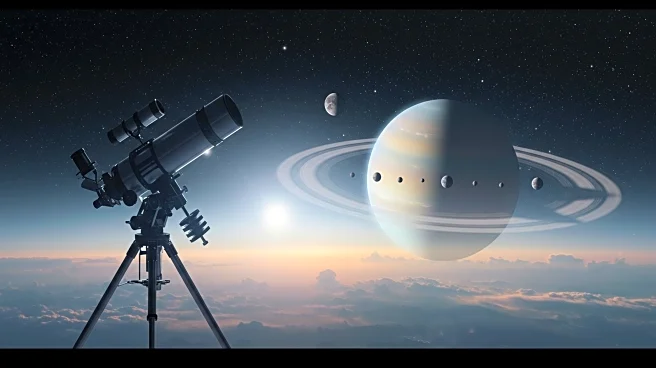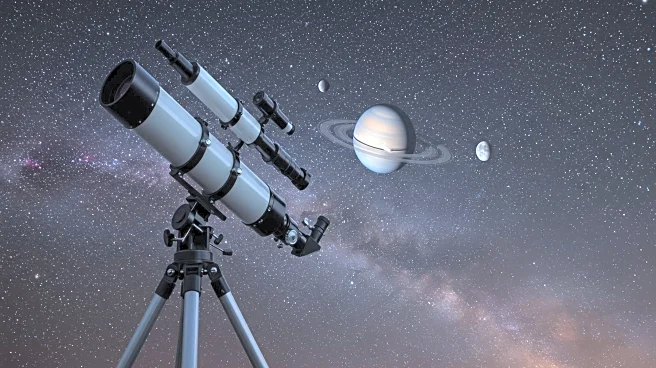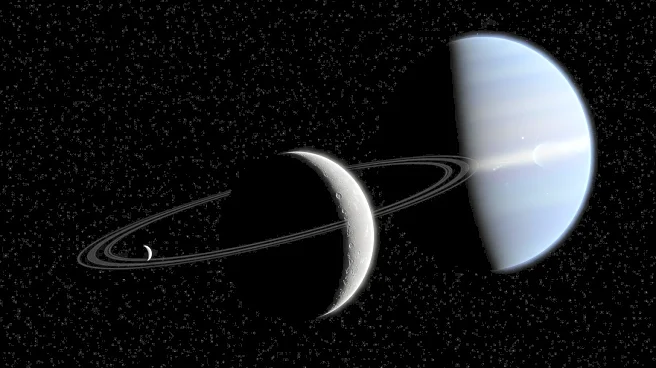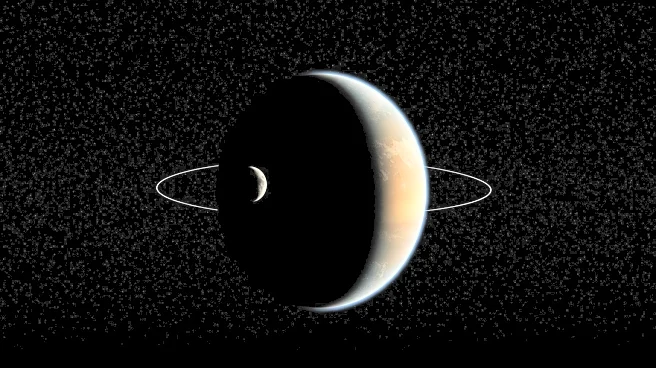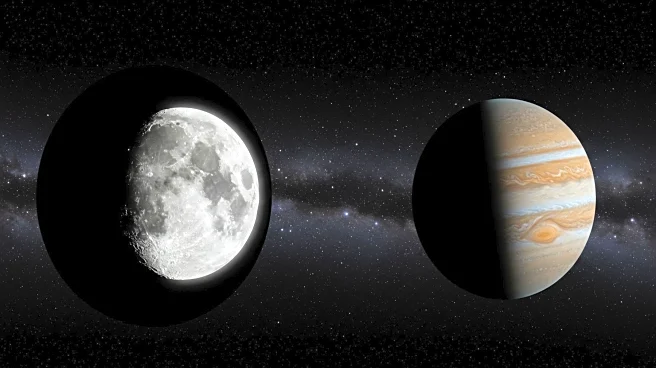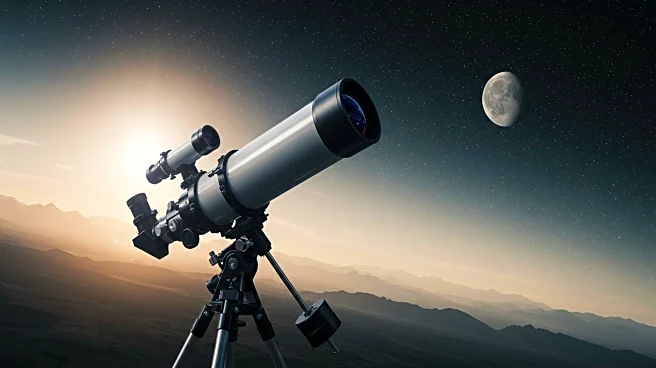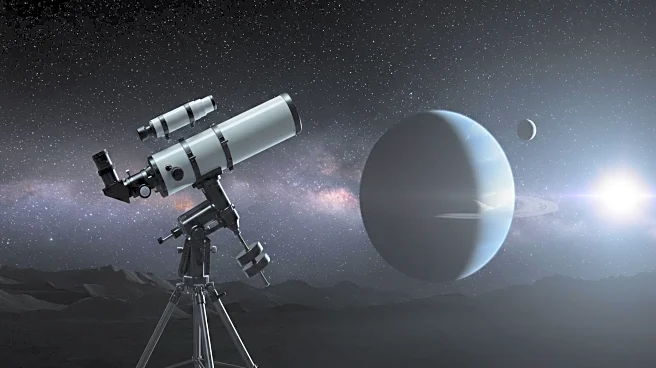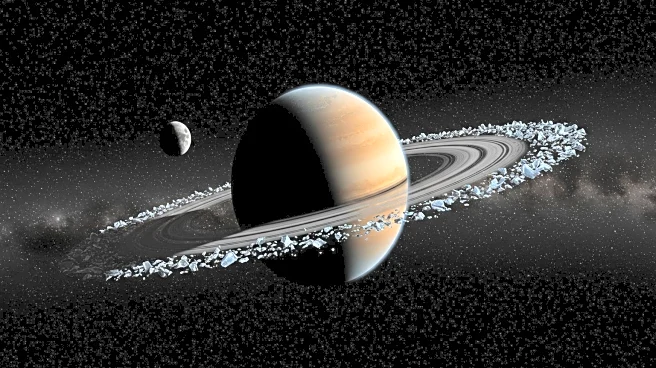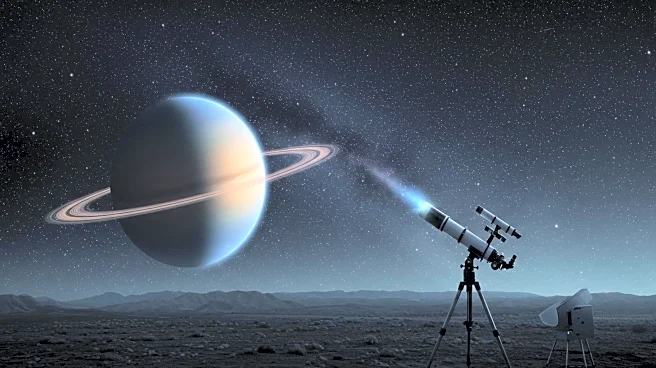What is the story about?
What's Happening?
The James Webb Space Telescope has discovered a new moon orbiting Uranus, increasing the planet's known moon count to 29. The moon, designated S/2025 U1, is approximately 6 miles in diameter and orbits between the moons Ophelia and Bianca. This discovery was made using the telescope's Near-Infrared Camera, which captured images of the moon on February 2, 2025. The discovery highlights the complexity of Uranus's system, which includes numerous small moons and rings.
Why It's Important?
The discovery of a new moon around Uranus is significant as it provides insights into the planet's complex system of rings and moons. Understanding these interactions can shed light on the history and formation of Uranus's rings and moons, which may have originated from a common ancient event. The findings also demonstrate the capabilities of the James Webb Space Telescope in detecting faint and distant objects, advancing our knowledge of the outer solar system. This discovery may lead to further exploration and study of Uranus's moons and rings.
What's Next?
Future missions, including the proposed Uranus Orbiter and Probe, could provide more detailed observations of Uranus and its moons, potentially uncovering more hidden moons and understanding their interactions with the rings. The International Astronomical Union will need to approve a formal name for the newly discovered moon. Continued observations by the James Webb Space Telescope may reveal additional moons and contribute to planning for future exploration missions.
Beyond the Headlines
The discovery raises questions about the chaotic history of Uranus's moons and rings, suggesting a blurred boundary between the two systems. The intricate relationships between the moons and rings may offer insights into the planet's formation and evolution. The naming of Uranus's moons after literary characters reflects the cultural impact of astronomical discoveries.
AI Generated Content
Do you find this article useful?
